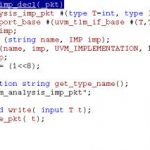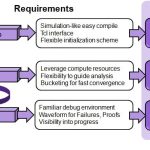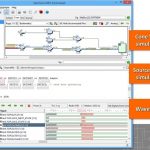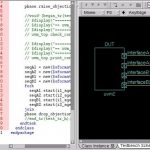Israel has a strong pedigree in functional verification. Among others, Verisity (an early contributor to class-based testbench design and constrained random testing) started in Israel and RocketTick (hardware-based simulation acceleration), acquired more recently by Cadence, is based in Israel. So when I hear about an … Read More
Tag: debug
Learn How to Debug UVM Test Benches Faster – Upcoming Synopsys Webinar
UVM for developing testbenches is a wonderful thing, as most verification engineers will attest. It provides abstraction capabilities, it encapsulates powerful operations, it simplifies and unifies constrained-random testing – it has really revolutionized the way we verify at the block and subsystem level.
However great… Read More
Bringing Formal Verification into Mainstream
Formal verification can provide a large productivity gain in discovering, analyzing, and debugging complex problems buried deep in a design, which may be suspected but not clearly visible or identifiable by other verification methods. However, use of formal verification methods hasn’t been common due to its perceived complexity… Read More
Mentor at DVCon – Visualize This
Steve Bailey entertained us during lunch on Tuesday with a talk on debug and visualization in the Mentor platform. Steve is based in Colorado, so had to spend the first part of his talk gloating about their Super Bowl win, but I guess he deserves that.
On a more technical note, he showed us a familiar survey they had completed with the… Read More
Multi-Level Debugging Made Easy for SoC Development
An SoC can have a collection of multiple blocks and IPs from different sources integrated together along with several other analog and digital components within a native environment. The IPs can be at different levels of abstractions; their RTL descriptions can be in different languages such as Verilog, VHDL, or SystemVerilog.… Read More
Fastest SoC time-to-success: emulators, or FPGA-based prototypes?
Hardware emulators and FPGA-based prototyping systems are descendants of the same ancestor. The Quickturn Systems Rapid Prototype Machine (RPM) introduced in May 1988 brought an array of Xilinx XC3090 FPGAs to emulate designs with hundreds of thousands of gates. From there, hardware emulators and FPGA-based prototyping … Read More
Michael Sanie Plays the Synopsys Verification Variations
I met Michael Sanie last week. He is in charge of verification marketing at Synopsys. I know him well since he worked for me at both VLSI Technology and Cadence. In fact his first job out of college was to take over support of VLSIextract (our circuit extractor), which I had written. But we are getting ahead.
Michael was born in Iran and… Read More
Never Imagined So Easy Class-based Testbench Debugging
When it comes to debugging a design testbench organized in object-oriented style with objects, component hierarchies, macros, transactions and so on, it becomes an onerous, tasteless, and thankless task for RTL verification engineers who generally lag in software expertise. Moreover, class-based debugging tools have lagged… Read More
Taking prototyping beyond prototypes
Everyone has heard the expression, “Half the job is having the right tool.” In the case of FPGA-based prototyping, however, the right tool for the job is only the beginning. What teams really need to think through is what exactly should be done with an FPGA-based prototyping tool?
The obvious answer is prototyping an SoC, pre-silicon.… Read More
Experts Talk at Mentor Booth
It’s less than four weeks to go at DAC 2015 and the program is final now. So I started investigating new technologies, trends, methodologies, and tools that will be unveiled and discussed in this DAC. In the hindsight of the semiconductor industry over the last year, I see 14nm technologies in the realization stage and 10nm beckoning… Read More








